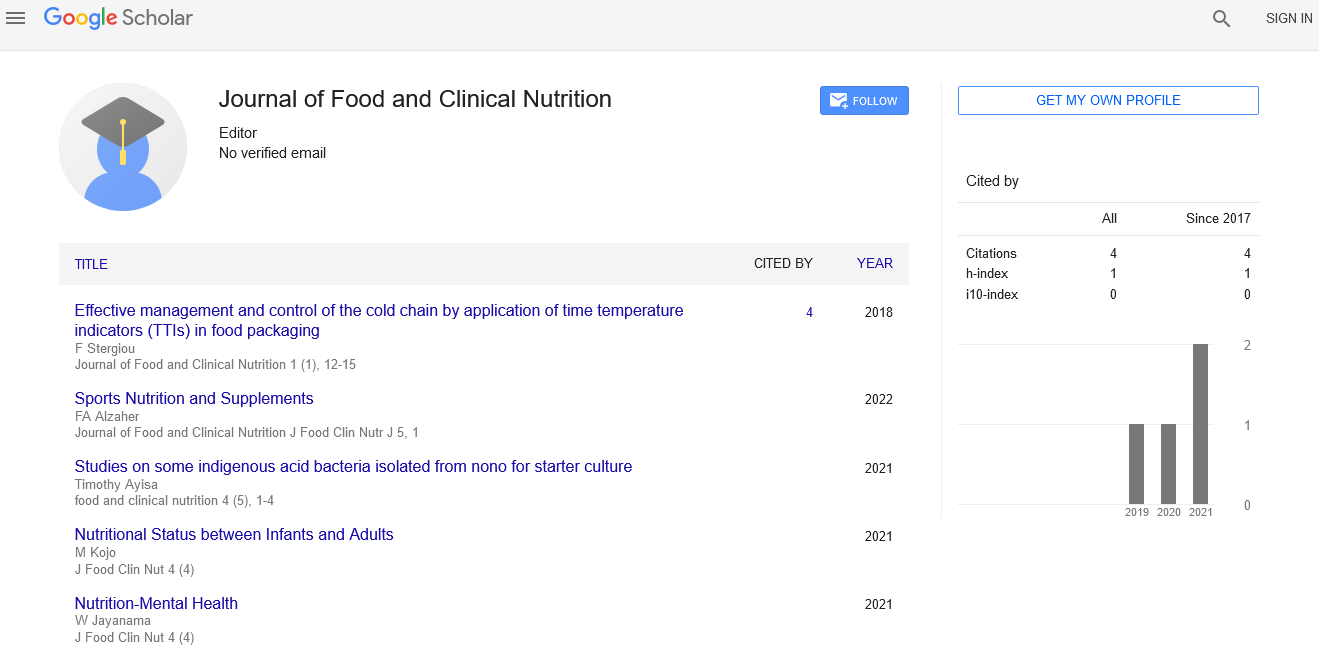Survival, antibacterial, and aggregation abilities of lactobacillus strains from Moroccan dairy products in the research for a novel probiotic candidate
Received: 05-Oct-2024, Manuscript No. PULJFCN-22-4803; Editor assigned: 08-Oct-2024, Pre QC No. PULJFCN-22-4803; Accepted Date: Oct 20, 2024; Reviewed: 10-Oct-2024 QC No. PULJFCN-22-4803; Revised: 12-Oct-2024, Manuscript No. PULJFCN-22-4803; Published: 29-Oct-2024
This open-access article is distributed under the terms of the Creative Commons Attribution Non-Commercial License (CC BY-NC) (http://creativecommons.org/licenses/by-nc/4.0/), which permits reuse, distribution and reproduction of the article, provided that the original work is properly cited and the reuse is restricted to noncommercial purposes. For commercial reuse, contact reprints@pulsus.com
Abstract
In light of the increased interest in dairy probiotic meals and the need to learn more about the biodiversity of these foods, In microbiology applied to the food sector, these strains might be used as probiotics. The goal of this study is to see how effective probiotics are. 17 Lactobacillus strains isolated from local dairy products: fresh cheese and fermented milk have been studied for their potential. Amplification of the first PCR product Lactobacillus strains were divided into groups using repetitive bacterial DNA fingerprints (rep-PCR) and ERIC primers, L. plantarum, L. casei, L. paracasei curvatus, as well as L. rhamnosus and revealed a high level of genetic diversity. Lactobacillus strains were tested for cell viability under a variety of circumstances that were comparable to those found in the environment the gastrointestinal tract we also looked into antibacterial activities and aggregation characteristics.
Introduction
Lactobacillus strains isolated from fresh cheese and fermented milk in the area have showed a lot of genetic variation. L. plantarum and L. rhamnosus were discovered to have a strong ability to survive at low pH and high bile salt concentrations, as well as good antibacterial activity and the ability to auto-aggregate with one other and co-aggregate with pathogenic bacteria. This discovery will give scientific backing for widespread consumption of traditional Moroccan dairy products, which will benefit the health community. As a result, the development or expansion of the food sector becomes possible. In Morocco, dairy creation of dairy cows is critical in horticulture and assumes a principal part in taking care of a developing and progressively metropolitan populace. Milk creation expanded from 475 million liters in 1975 to 1 billion 331 million liters in Dairy items produced using privately delivered crude milk stay a vital piece of the day to day diet. Individuals living in the nation use milk to create “jben” of curds, “smen” of aged spread and “lben” of matured skim milk. In the north of Morocco, the matured milk, ‘lben’ is generally produced using crude cow milk by unconstrained maturation. Numerous Moroccan conventional dairy items have a decent dietary benefit that merit creation at little and huge modern scale to normalize their handling stages, work on their wellbeing and timeframe of realistic usability, and upgrade their additional worth properties. In this manner, authoritatively perceiving these dairy items and permitting them to be officially advertised could, thusly, add to the economic improvement of the open country. Tragically, a couple items have been experimentally examined to permit normalization of their innovative developments. The strength of the microbial substance of these items over the long haul isn’t notable. Be that as it may, ecological circumstances like temperature, beginning and nature of the milk, handling and clean circumstances, could impact the microbial creation of customarily made dairy items. Lactic corrosive microbes (LAB) are among the main gatherings of microorganisms in food maturation. They add to the taste and surface of matured items, and their presence is corresponded with their job as starter societies and bio-additives. Furthermore, they restrain food waste and pathogenic microorganisms by delivering a variety of antimicrobial substances. Albeit the most recent examination shows that Lactobacillus strains open additional opportunities for controlling L. monocytogenes by biofilms arrangement as a “whiz” immobilization way dispersal, whether species collaborations could change the destructiveness of L. monocytogenes still remaining parts hazy.
Conclusion
Moroccans’ conventional dairy items: new cheddar “Jben” and matured milk “Lben” show that they can be the wellspring of potential probiotic strains with a decent degree of hereditary variety and high level of similitude. In general, seventeen LAB segregated from nearby dairy items: new cheddar and matured milk were shown to be harmless in view of our tests. As per our outcome lactobacillus strains that exhibited a decent probiotic potential by restraining pathogenic microbes, reinforcing epithelial capacity (through their collection properties, and biliary salt resistance) were: L. plantarum disengaged from new cheddar “Jben”, L.plantarum and L. rhamnosus disengaged from aged milk “Lben”.





